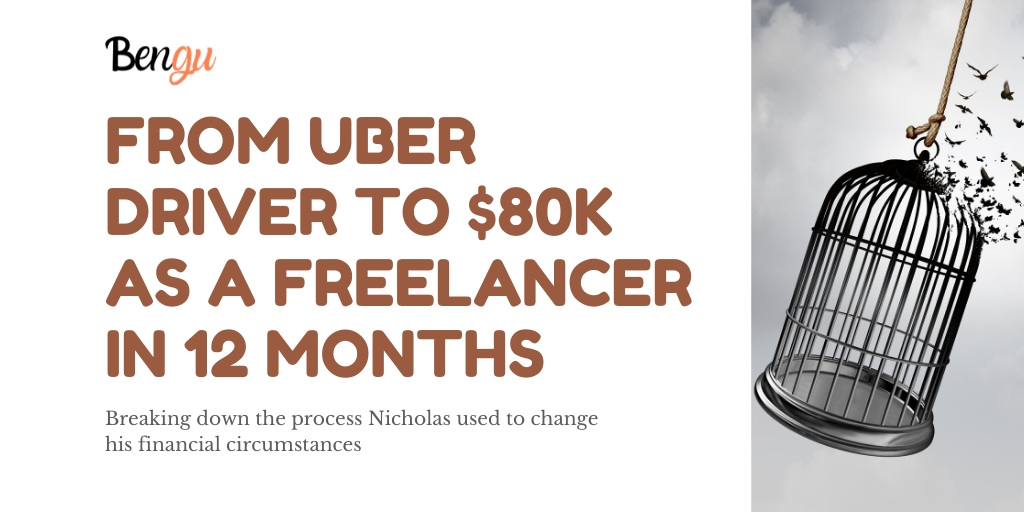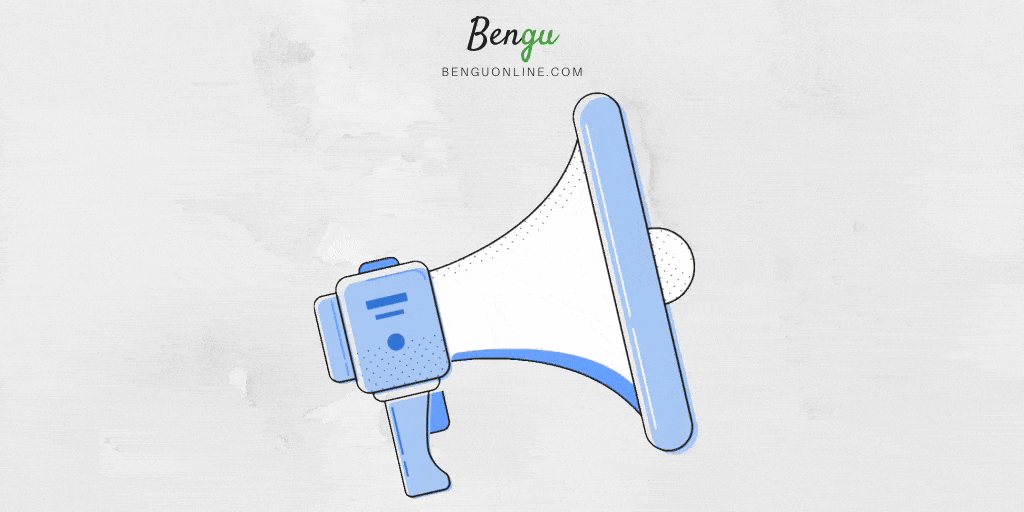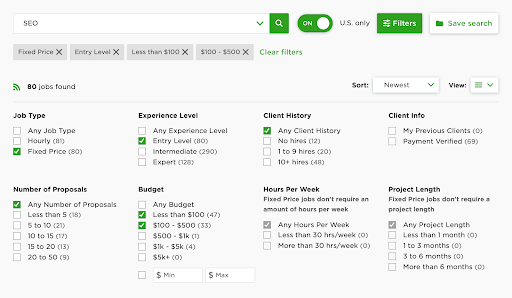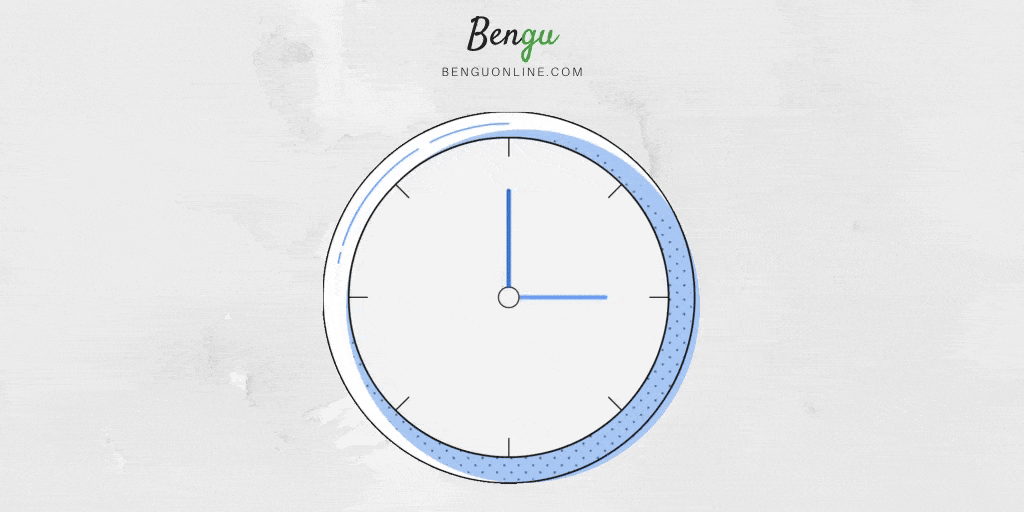Many people dream of starting a business and working from home.
The lifestyle of working in your PJ’s and setting your own schedule seems like it would be great, right?!
I can tell you from experience — it kicks ass.
Just over a year ago, I was making about $500 a week driving for Uber and Lyft. This made it hard to afford things after paying my rent and other living expenses.
I had a college degree in Marketing but didn’t want to get a regular job where I’d go into an office and answer to my boss every day.
Instead, I decided to give freelancing a shot.
And by giving it a shot, I don’t mean a simple “Oh, let me sign up for Upwork and see where this goes.”
No, I decided to give it everything. I was motivated to get out of near poverty level income and start living the lifestyle I’d always wanted to.
12 months later, I’ve made $80k as a freelancer.
I’ll walk you through exactly how I did it, and how you can too, in the 3 steps below.
Let’s dive in!
Step 1: Develop a marketable skill and build your work history
If you want to get into freelancing, you need to be great at something people are willing to pay for.
You can’t just do this by taking some courses on Udemy. Don’t get me wrong, many of these courses are great — and you absolutely should do them…
But they’re just the start.
If clients are going to hire you, you need more than just coursework to prove you know what you’re doing. What they’re really looking for is real-world experience in the skill you claim to have.
Why? Because all they care about is your ability to get the job done to a high standard.
To give them this, you can build a portfolio of work history by working on projects of your own. I did this with SEO by growing my own website to 35,000 monthly visitors before I started going after clients.
This way, when I go after clients, I can show them what I’ve done and explain how I can do something similar for them.
The whole point of SEO is to rank a website in Google in an effort to get more traffic. By accomplishing this on my own, I’ve built a resume of work history that demonstrates my skill in the real world and creates immediate credibility with any prospective client.
I can tell them “Go search for X on Google. I’m #1” and they’re thinking “Wow, this guy knows his stuff!”
Bingo!
So, when it comes to developing a marketable skill, aim to get hands-on experience in what you’re learning, instead of just the theory. You want to show that you can apply your knowledge.
Here are a few ways you can accomplish this with different freelance skills:
This is how you develop a skill you can confidently sell to prospective clients, as well as build up an impressive portfolio.
Picture this:
Let’s say you wanted to lose weight — who do you go to…
- The person who says they know how to lose weight, but are still overweight and still trying to lose it.
- The person who has been overweight before and is now a super lean fitness instructor.
Your potential clients are in a similar position for every freelancer they try to hire. Looking at a freelancer’s work experience is how they make decisions on which one to hire.
Step 2: Land your first gig – even if it’s just for reviews
Once I developed my skill in SEO, I then signed up for Upwork and applied for super-cheap jobs at a very low rate to start getting reviews on the platform.
My first job took me about 8 hours to complete and I only made $50, but it got me my first review.
This concept is known as penetration pricing, which is often used for new businesses to enter into an existing industry. This concept applies to Freelancing too.
After you get your first review on a freelancing platform, landing more clients gets easier.
If you can land enough jobs and get enough experience to reach Top-Rated status, that’s even better!
To find gigs like this on Upwork, simply use their filters to sort for low budget, fixed price gigs that are for beginner freelancers:
These clients are more willing to take a chance on new freelancers. Quick projects with small budgets typically have urgency, and these clients frequently hire the first freelancer to apply, so keep an eye on these opportunities.
When looking for these low budget jobs, make sure you go after fixed price jobs – not hourly. Hourly jobs are usually for longer-term work, which means you could get stuck working at a low rate.
If you need help applying for gigs on these platforms, check out this guide from Upwork.
Step 3: Start landing hourly gigs
After my first few low-paying jobs were complete, I started looking for regular work.
My first long-term client paid me $25/hr. Not bad for a new freelancer.
I chose $25/hr because most SEOs were charging $35/hr or more, and I knew that since I haven’t had lots of work history on Upwork, I needed to maintain my penetration pricing strategy.
When you get a few reviews from cheap fixed-price jobs, start looking for hourly work.
At first, you’re going to want to compete on price because you don’t have enough reviews for people to trust that you’re worth paying a premium for.
To see what other freelancers are charging, just go on your chosen freelance platform and search for freelancers in your space:
Make sure your hourly rate is less than what’s shown, but still enough for you to be able to live comfortably once you hit full-time hours.
In some cases, you may not be able to find much hourly work…
Writing is a good example of this since people mostly want to pay per word. The same concept applies, however. Choose a rate that’s lower than the average of what other freelancers are charging.
In the case of fixed-price work, see if you can find clients that give you weekly or bi-weekly work.
Get enough clients to nearly fill your schedule.
Related Content: If you’re looking to get started doing some freelance writing, check out Contena — a powerful platform for pen-creative upstarts.
Step 4: Increase your rates by increasing demand
Once you’ve built up a client base with your lower rate, you can begin to increase your price based on demand.
This is how I increased my rate from $25/hr to $75/hr in just a few months.
My first client paid me $25/hr and gave me 20 hours/week. This allowed me to quit doing Uber. Since I didn’t need more work, I then increased my rate to $50/hr and started going after clients at that rate.
After I booked a few $50/hr clients, I then increased my rate to $75/hr.
When you increase your rate and start getting offers at that rate, you can begin to replace your lower value clients with higher-value ones.
Alternatively, you can leverage this to negotiate raises with your current clients.
To effectively increase your rate, you need to feel out the supply and demand of your services. If you’re Top Rated, getting tons of invites, and lots of people want to work with you, you can afford to increase your rates.
If you aren’t at this level yet, keep working at getting gigs, great reviews, and improving your presence on the platform.
When you feel like you have too many opportunities, that’s a good indicator that you can increase your rate.
Step 5: Set yourself up for freelancing success
When developing a career as a freelancer — some things make it tougher than need be. While it certainly involves creating your own work schedule and working in your PJ’s (or even your birthday suit ;-) ) here are some noteworthy points:
Conclusion
So there you have it! How I went from Uber driver to $80k freelancer in under 12 months.
Hopefully, you have a better understanding of what it takes to make a decent living as a freelancer.
If I’ve learned anything in my journey, it’s this:
The skill is the most important thing. If you truly are good at what you do, the selling will work itself out.
So focus on becoming great, and you’ll have no trouble.
Good luck!
Nick Rubright from Jacksonville, Florida is a freelance digital marketing specialist that helps clients improve their presence in search engines. In his free time, he likes to write and play the guitar in his band, Days Gone By. If you need help with anything marketing related, you can hire him here







